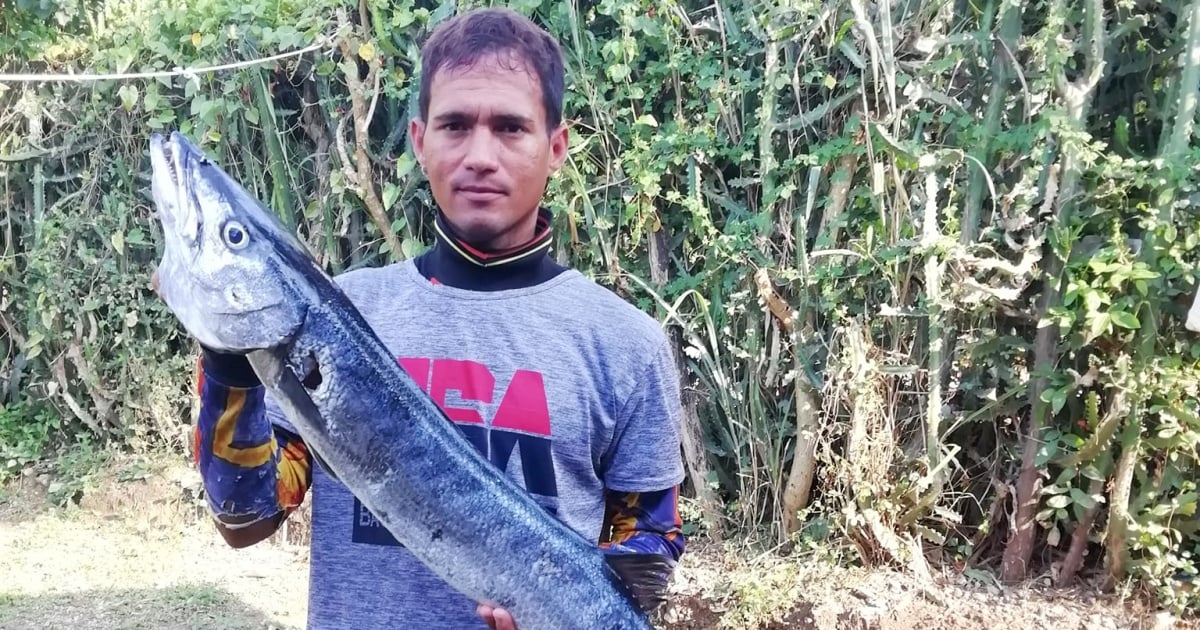- Messages
- 54,477
- Reaction score
- 8,579
- # of dives
- 500 - 999

Young Diver Dies in Santiago de Cuba: Community Mourns Tragic Loss
A tragic incident unfolded on Monday as a young diver, identified as Dennis Batista Leyva, lost his life along the coastal area known as "El Sardinero...
https://twitter.com/intent/tweet?ur...antiago de Cuba: Community Mourns Tragic Loss
A tragic incident unfolded on Monday as a young diver, identified as Dennis Batista Leyva, lost his life along the coastal area known as "El Sardinero." This spot, popular among locals in Santiago de Cuba, is notorious for its hazardous conditions. According to journalist Yosmany Mayeta, Batista, aged 35, ventured alone into the waters to spearfish, a routine activity for him, but unfortunately, he did not return alive. His body was later discovered by fellow fishermen in the vicinity.
Faced with delays from authorities and the absence of a legal medical team past 8:00 p.m., Batista's colleagues were forced to preserve his body in a water pit to prevent decomposition. Eyewitnesses reported that the diver showed signs of a pressure-related incident, likely due to deep diving. His body exhibited bleeding from the nose and ears, indicating a potential internal collapse caused by the underwater environment.
Batista, a well-loved member of his community, resided in the area between Alta Vista and Micro 1A in the Abel Santamaría district. He lived with his children and partner, and Sunday marks his son's seventh birthday. His mother, currently residing in Spain, has been informed and is expected to arrive in Santiago de Cuba soon to bid her final farewell.
Community Reels from Loss
The tragic death has deeply affected the community. Numerous neighbors, friends, and fellow fishermen have taken to social media to express their condolences and grief. "He was a hardworking, joyful guy, beloved by everyone, and a true lover of the sea," shared one fisherman involved in the recovery. Another, moved by the news, wrote, "Oh, 'Chino,' this news breaks my heart. We were like brothers in fishing; I'll never forget our last trip on El Colibrí. May God rest your soul."
Many comments not only express sorrow but also subtly criticize the circumstances that led him to the sea. "Poor thing, he probably died trying to earn a little to support his child," lamented one user. Another commented, "He's not the first to die there; that place should be off-limits. How many more lives must be lost?" Some, familiar with spearfishing, noted that despite his experience, diving alone significantly increased the risks. "It wasn't his day; he was a good diver, but down there, it doesn't forgive," remarked a colleague. A local resident summarized the tragedy: "El Sardinero has claimed another. How long will we continue to ignore the danger?"
A Beautiful Yet Treacherous Spot: Official Warnings
This unfortunate event is not isolated. In mid-July, Aris Arias Batalla, the provincial head of Operations and Rescue in Santiago de Cuba, issued a public warning highlighting the specific dangers of the southeastern Cuban coasts, including areas like Guamá, Baconao, and by extension, "El Sardinero."
The main hazards identified by the specialist include:
Arias Batalla emphasized the importance of not swimming or diving alone, avoiding diving under adverse weather conditions, and heeding warnings from locals and authorities. "These coasts are breathtaking, but their untamed nature makes them perilous if precautions aren't taken," he stressed.
- Powerful riptides that can swiftly drag swimmers or divers out to sea.
- Erratic waves and sudden depth changes.
- Rocky and sharp coral-laden seabeds, which increase the risk of injury.
- Unpredictable weather conditions that can change rapidly even on sunny days.
- Occasional presence of jellyfish and sharks, though attacks are rare.
These warnings came amidst a backdrop of recent tragedies due to drownings, including the death of a teenager in the Chalons reservoir and another victim at Juraguá beach.
Understanding the Risks of Diving in Santiago de Cuba
What are the dangers of diving in "El Sardinero"?
The area is known for strong riptides, sudden depth changes, rocky and coral-filled seabeds, and unpredictable weather, all of which pose significant risks to divers.
Why is diving alone particularly dangerous?
Diving alone increases the risk of accidents as there is no immediate help available in case of emergencies, such as equipment failure, medical issues, or environmental hazards.
What precautions should divers take in risky areas?
Divers should never dive alone, always check weather conditions, use appropriate gear, and heed local warnings and guidelines to ensure safety.



